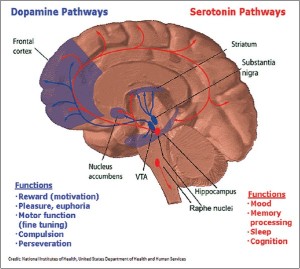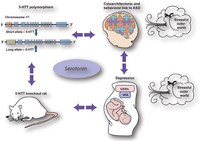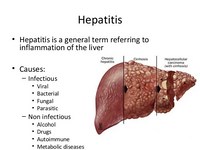 In a previous article, I touched on the very basics of mindfulness. I said mindfulness was a state of mind, one in which we are aware of the self and unfolding experience in a moment-by-moment attentiveness; I called it a state of conscious consciousness. When going about our regular day, most of us operate on a predominantly auto-pilot mechanism. Most of our actions are habitual. We can execute them without much thought, even the complex activities like driving or working at our jobs, and indeed, many people do just fine under this system.
In a previous article, I touched on the very basics of mindfulness. I said mindfulness was a state of mind, one in which we are aware of the self and unfolding experience in a moment-by-moment attentiveness; I called it a state of conscious consciousness. When going about our regular day, most of us operate on a predominantly auto-pilot mechanism. Most of our actions are habitual. We can execute them without much thought, even the complex activities like driving or working at our jobs, and indeed, many people do just fine under this system.
When we need our more attentive mind, we can do that, too, without much ado for relatively short periods. Holding the focus, however, is not that simple. Holding the focus requires brain power, skill, and training; each one accomplishable by most people. Brain power relates to health not IQ, skill to development, and training to hours of practice; but all are reachable for the average person. It takes enormous focus to perform as elite athletes, concert musicians, surgeons of any sort, and deep thinkers. Every one of us can improve at what we do professionally and personally, in most areas of life, by honing our focus – our conscious consciousness.
So it takes practice to develop the skill of mindfulness. And in so doing it is important to practice effectively. Yes there are techniques. More important, however, is that the practitioner understands to what he or she is attending; in other words, what is the goal in mind. For sure, it is to focus and hold the attention for as long as possible. And if the focus is lost, then the objective is to return to the focus and hold, and refocus and hold, and so on.
 With this basic intent and action, the practitioner will also need to consider some fundamental elements of our mind which are ingrained and habitual, yet completely contrary to maintaining focus. These mind habits will pull your attention away and take you down paths which are easy to get lost on. By simply having awareness of these habitual behaviors of the mind, you can keep yourself off these temporal paths of past memory and future imagination. I do not mean to knock either memory or imagination, as both serve their purpose, but as I have said, both oppose our intent to maintain focus. Discussing these elements is another of way explaining mindfulness by laying out exactly what it is not.
With this basic intent and action, the practitioner will also need to consider some fundamental elements of our mind which are ingrained and habitual, yet completely contrary to maintaining focus. These mind habits will pull your attention away and take you down paths which are easy to get lost on. By simply having awareness of these habitual behaviors of the mind, you can keep yourself off these temporal paths of past memory and future imagination. I do not mean to knock either memory or imagination, as both serve their purpose, but as I have said, both oppose our intent to maintain focus. Discussing these elements is another of way explaining mindfulness by laying out exactly what it is not.
The first thing mindfulness is not is control. It has nothing to do with controlling the mind. While we aspire to sharpen our focus, we do not accomplish it by controlling our thoughts. Part of awareness is being conscious of your incoming and outgoing thoughts. Once you observe them for long enough you come to realize that you have no control over them anyway. Where do they come from? Why are they persistently of particular types? These answers will become clearer as you practice. Mindfulness is allowing these thoughts to come as they come, and go as they go. It is never about stopping any particular thoughts like, “I shouldn’t be thinking that.” Instead, being aware of the nature of your thoughts will teach you a great deal about your highest values. Your seemingly random stream of consciousness is directly related to your value system. I say to my students, “You will come to know your values intimately when you practice mindfulness.”
The next thing mindfulness is not is judgment. Judgment is a natural mind activity. We judge by default almost constantly: Good, bad, right, wrong, up, down, hot, cold, safe or sorry – all of these are judgments we are making constantly. We need judgment to survive; we have to select between choices constantly. As a hardwired function of the human mind, we judge things, idea and experiences with little to no thought. In fact, this system is so strong that we often allow it to make decisions for us, even in spite of evidence showing errors in our judgment. That being said, mindfulness is neither about judging our thoughts nor stopping judgment. It is about observing our judgments without becoming attached to them. Our mind creates stories that we can easily get carried away by. Mindfulness is allowing these stories to take shape, making note of them, and allowing them to fade as abruptly as they come. It is not allowing one story to lead to the next while falling unconsciously into its stream. A seasoned mindfulness practitioner recognizes this as the standard state of the mind – the unconscious consciousness of auto pilot.
 Finally, mindfulness is not assessing oneself, one’s life, or anybody else’s and it is definitely not comparing oneself to others. Mindfulness is being aware of present moment – as it is. It is not desiring something different, just as it is not an elation over the way things are. At its most basic: it is an acceptance of things exactly the way they are. But more precisely, it is an underlying appreciation of things as they currently are. The human mind has the tendency to seek the next desire, goal, accomplishment and/or novelty. While this may have distinct advantages – like the advancement of civilization, for instance – it can lead to an incessantly chattering mind. One reason our mind jumps from story to story is precisely because of this function. Our seeking minds find problems to solve and obstacles to be overcome; it does so naturally and automatically.
Finally, mindfulness is not assessing oneself, one’s life, or anybody else’s and it is definitely not comparing oneself to others. Mindfulness is being aware of present moment – as it is. It is not desiring something different, just as it is not an elation over the way things are. At its most basic: it is an acceptance of things exactly the way they are. But more precisely, it is an underlying appreciation of things as they currently are. The human mind has the tendency to seek the next desire, goal, accomplishment and/or novelty. While this may have distinct advantages – like the advancement of civilization, for instance – it can lead to an incessantly chattering mind. One reason our mind jumps from story to story is precisely because of this function. Our seeking minds find problems to solve and obstacles to be overcome; it does so naturally and automatically.
Mindfulness, however, is not wanting the world to be different; it is not wanting your life to be different. Mindfulness is loving and appreciating your life in present time. More accurately, it is observing the present moment in depth, with sharp focus, and no judgment; it is carried out with an underlying appreciation of self and circumstance. When you can passively observe the details of your life, remain poised, and not become emotionally swayed, you will be practicing mindfulness properly.
With all that being said, it is important to remember that these skills are sharpened over time and effort. You have to practice mindfulness to master it. Once you get the hang of it, you will begin to experience a depth to your awareness. You will enjoy your activities and interactions more. You will have greater insights and certainty, and you will open portals of your mind that will enhance creativity and productivity. Anything worth doing comes with difficulties, and practicing mindfulness is no exception. I can say with certainty that you will find the rewards of mindfulness practice well worth the investment.



 More importantly, they happen without our taking notice. We do not have to think about our every action. We do not have to initiate every move, only the decision, and sometimes not even that. By freeing our mind of these routine actions, we are able to concentrate more on complex actions and behaviors, we are able to think about abstract ideas, and we are able to self-reflect (as far as we know, the only species that does this). Complex thinking has led to the creation of musical masterpieces, mathematical theories, and technological innovations. It has inspired timeless art, revolutionary science and allowed us to ask and ponder the great philosophical questions of life, those that give our lives meaning. Without an automation of our primary thought system, it is questionable whether we’d have ever accomplished anything more than our most basic survival. Automation of thought is the first and foremost system used by the brain on a regular basis. More than ninety percent of our day is made up of habitual actions. According to Daniel Kahneman, Nobel Prize winning psychologist and economist, ninety-eight percent of our mental processes are of the automatic, effortless, and unconscious kind, even though we tend to believe we are making rational decisions throughout the day. Most people are thus walking through life effortlessly unaware, allowing their automatic thoughts to flow in and out of consciousness, and create a stream of time which ultimately frames their experiences. I like to call this unconscious consciousness – consciously awake, just not aware.
More importantly, they happen without our taking notice. We do not have to think about our every action. We do not have to initiate every move, only the decision, and sometimes not even that. By freeing our mind of these routine actions, we are able to concentrate more on complex actions and behaviors, we are able to think about abstract ideas, and we are able to self-reflect (as far as we know, the only species that does this). Complex thinking has led to the creation of musical masterpieces, mathematical theories, and technological innovations. It has inspired timeless art, revolutionary science and allowed us to ask and ponder the great philosophical questions of life, those that give our lives meaning. Without an automation of our primary thought system, it is questionable whether we’d have ever accomplished anything more than our most basic survival. Automation of thought is the first and foremost system used by the brain on a regular basis. More than ninety percent of our day is made up of habitual actions. According to Daniel Kahneman, Nobel Prize winning psychologist and economist, ninety-eight percent of our mental processes are of the automatic, effortless, and unconscious kind, even though we tend to believe we are making rational decisions throughout the day. Most people are thus walking through life effortlessly unaware, allowing their automatic thoughts to flow in and out of consciousness, and create a stream of time which ultimately frames their experiences. I like to call this unconscious consciousness – consciously awake, just not aware. While many people turn to drugs and alcohol in a futile attempt to quiet the mind-chatter, these mind-alterers actually make matters worse over time. The only way to diminish mind-chatter is to pull the mind into attention. That’s why sports and exercise have been popular since antiquity. By focusing on a physical activity, the mind is forced into what Kahneman calls system 2 thinking, or one which is done with our conscious mind – conscious consciousness – effortful, intentional, and controlled. Making art and music are also amazing mind-chatter reducers. So is doing math, or thinking about anything in detail, like when you strategize or follow a protocol. Anything which forces the mind to focus reduces mind chatter (one reason smart phones have become addictive). However, even these activities, when done repeatedly can become automatic. Without a doubt, people strive to make automatic as many of their activities as possible. We call this mastery. And mastery makes what was once effortful a habituation. As a result, once we master an activity, it does have the potentiality to become an automatic process.
While many people turn to drugs and alcohol in a futile attempt to quiet the mind-chatter, these mind-alterers actually make matters worse over time. The only way to diminish mind-chatter is to pull the mind into attention. That’s why sports and exercise have been popular since antiquity. By focusing on a physical activity, the mind is forced into what Kahneman calls system 2 thinking, or one which is done with our conscious mind – conscious consciousness – effortful, intentional, and controlled. Making art and music are also amazing mind-chatter reducers. So is doing math, or thinking about anything in detail, like when you strategize or follow a protocol. Anything which forces the mind to focus reduces mind chatter (one reason smart phones have become addictive). However, even these activities, when done repeatedly can become automatic. Without a doubt, people strive to make automatic as many of their activities as possible. We call this mastery. And mastery makes what was once effortful a habituation. As a result, once we master an activity, it does have the potentiality to become an automatic process.



 Obviously, different people want different things. Every person can have a version of the future they envision to some degree. I will explain this idea more fully in a bit. But right now exists opportunity to shape your world in the way you want it. Yes you can shape society too, but do not fall victim to the belief that you can do it against the will of others. To create lasting social change, the hearts and mind of the people must be won over. Let me encourage you to think of any lasting social change, and investigate how it was accomplished. Yes violence has happened in moments of societal change, but the violence itself was not the catalyst to the lasting change, it was the inspired movement of hearts and minds which led to the transformation.
Obviously, different people want different things. Every person can have a version of the future they envision to some degree. I will explain this idea more fully in a bit. But right now exists opportunity to shape your world in the way you want it. Yes you can shape society too, but do not fall victim to the belief that you can do it against the will of others. To create lasting social change, the hearts and mind of the people must be won over. Let me encourage you to think of any lasting social change, and investigate how it was accomplished. Yes violence has happened in moments of societal change, but the violence itself was not the catalyst to the lasting change, it was the inspired movement of hearts and minds which led to the transformation.  When forging a path in this new world, it would be wise to focus on your highest values. Those things that act as drivers for your decisions – things you are inspired by daily – are what you should focus on and centralize in your vision. For some people it is family, for others it is service, and for even others it is the beauty of the world (artists, poets, musicians, mathematicians, etc.). There is certainly no right or wrong in this regard, other than the importance you give it to your mission. Simply put: A mission is a plan with a purpose. The purpose is the why you do what you do, while the mission is the vision.
When forging a path in this new world, it would be wise to focus on your highest values. Those things that act as drivers for your decisions – things you are inspired by daily – are what you should focus on and centralize in your vision. For some people it is family, for others it is service, and for even others it is the beauty of the world (artists, poets, musicians, mathematicians, etc.). There is certainly no right or wrong in this regard, other than the importance you give it to your mission. Simply put: A mission is a plan with a purpose. The purpose is the why you do what you do, while the mission is the vision. Finally, and most importantly, is to strive for balance – in your personal endeavors, as well as for the collective or greater good. Understand that regardless of your vision, you will face obstacles in that endeavor. Obstacles are not vision-killers; they are feedback mechanisms that are in place to guide you. Your vision will be shaped and refined by the obstacles you face…and overcome. To do so you may need to alter your plan a bit. You may need to learn more, or you may need to change beliefs or perspectives. I love to read biographies on the greats of humanity to get a sense of their obstacles, their solutions, and their evolution. You will have yours in your unique way. When attempting to elicit change that is resisted by others, try to find a middle ground. Believe it or not, it is possible to exist in coinciding realities with others – that is, many people can live in worlds of their making together, even when it seems that their worlds are diametrically opposed. Find the common ground. How do you get what you love while others get what they love? That may be the very challenge for you to figure out, but what a powerful vision that is. “All you need is love” is not some hokey song lyric, but a profound truth of all human beings: How do I get what I love while you get what you love…? Living in the extreme polarities of any human issue is volatile – it brings the most stress, the least cooperation, and the baddest blood to the table. Finding the center point and striving for a win-win is the greatest achievement one can have, with the highest possibility of longevity. Game theory, a mathematical study, shows unequivocally that people do better when working together.
Finally, and most importantly, is to strive for balance – in your personal endeavors, as well as for the collective or greater good. Understand that regardless of your vision, you will face obstacles in that endeavor. Obstacles are not vision-killers; they are feedback mechanisms that are in place to guide you. Your vision will be shaped and refined by the obstacles you face…and overcome. To do so you may need to alter your plan a bit. You may need to learn more, or you may need to change beliefs or perspectives. I love to read biographies on the greats of humanity to get a sense of their obstacles, their solutions, and their evolution. You will have yours in your unique way. When attempting to elicit change that is resisted by others, try to find a middle ground. Believe it or not, it is possible to exist in coinciding realities with others – that is, many people can live in worlds of their making together, even when it seems that their worlds are diametrically opposed. Find the common ground. How do you get what you love while others get what they love? That may be the very challenge for you to figure out, but what a powerful vision that is. “All you need is love” is not some hokey song lyric, but a profound truth of all human beings: How do I get what I love while you get what you love…? Living in the extreme polarities of any human issue is volatile – it brings the most stress, the least cooperation, and the baddest blood to the table. Finding the center point and striving for a win-win is the greatest achievement one can have, with the highest possibility of longevity. Game theory, a mathematical study, shows unequivocally that people do better when working together.































 The quest to “find” the Self can be carried out by a number of paths. One such path is meditation.
The quest to “find” the Self can be carried out by a number of paths. One such path is meditation. 













 Skeptics wish to emphasize that these results should not have tall people worrying about contracting cancer. I agree. Scientific inquiry into everything has value on many levels, but causing unnecessary stress is not one of them. Nobody wants or needs to have the risks associated with uncontrollable traits hanging over their heads, yet science shows what it shows; what can we do? It’s a tough situation really—an access to truth, yes, but unpleasant findings nonetheless. My feeling is just be grateful for the information so that you can monitor yourself throughout your lifetime as you age, and perhaps an inspiration to pick up the health regimen a bit. Hey, we can all do better than what we are doing now, and I even believe that striving for and achieving better fluctuates constantly throughout our lifetime too, so now is as good a time as any. If you are tall: start juicing, get lots of vitamin D (yes, even in the face of these findings on melanoma – adequate sun exposure is waaaaay more important than any melanoma fear, just sun smartly), take omega 3’s, drink lots of water, eat moderately, sleep plentifully, and so on, and you should be fine.
Skeptics wish to emphasize that these results should not have tall people worrying about contracting cancer. I agree. Scientific inquiry into everything has value on many levels, but causing unnecessary stress is not one of them. Nobody wants or needs to have the risks associated with uncontrollable traits hanging over their heads, yet science shows what it shows; what can we do? It’s a tough situation really—an access to truth, yes, but unpleasant findings nonetheless. My feeling is just be grateful for the information so that you can monitor yourself throughout your lifetime as you age, and perhaps an inspiration to pick up the health regimen a bit. Hey, we can all do better than what we are doing now, and I even believe that striving for and achieving better fluctuates constantly throughout our lifetime too, so now is as good a time as any. If you are tall: start juicing, get lots of vitamin D (yes, even in the face of these findings on melanoma – adequate sun exposure is waaaaay more important than any melanoma fear, just sun smartly), take omega 3’s, drink lots of water, eat moderately, sleep plentifully, and so on, and you should be fine.




















